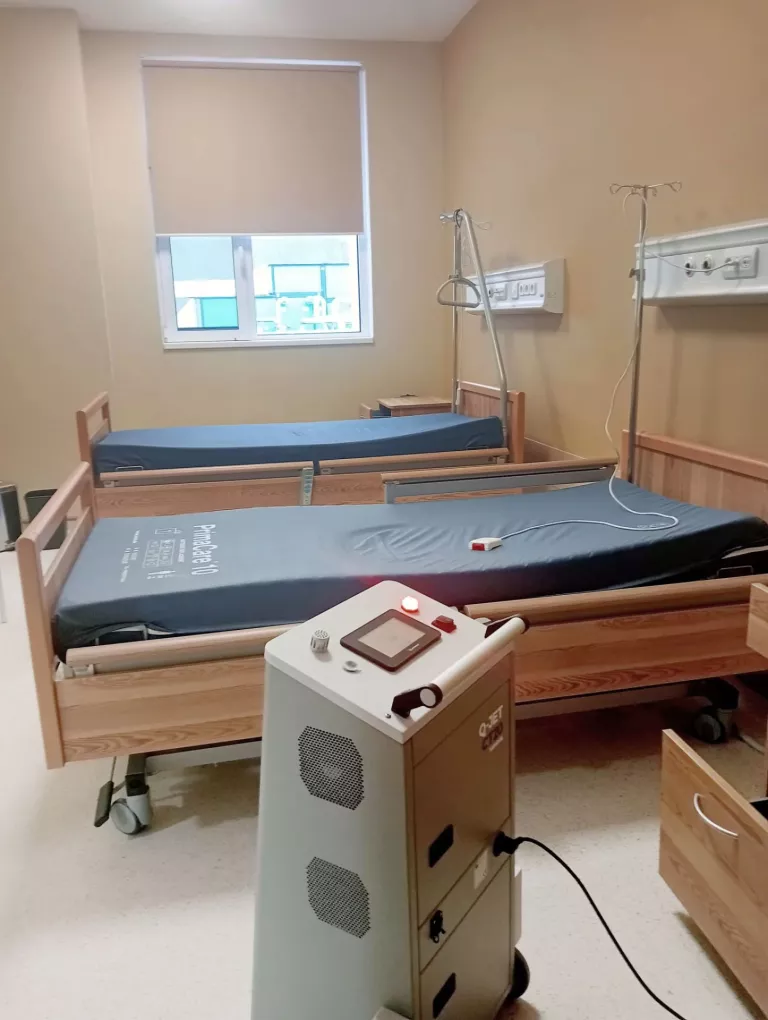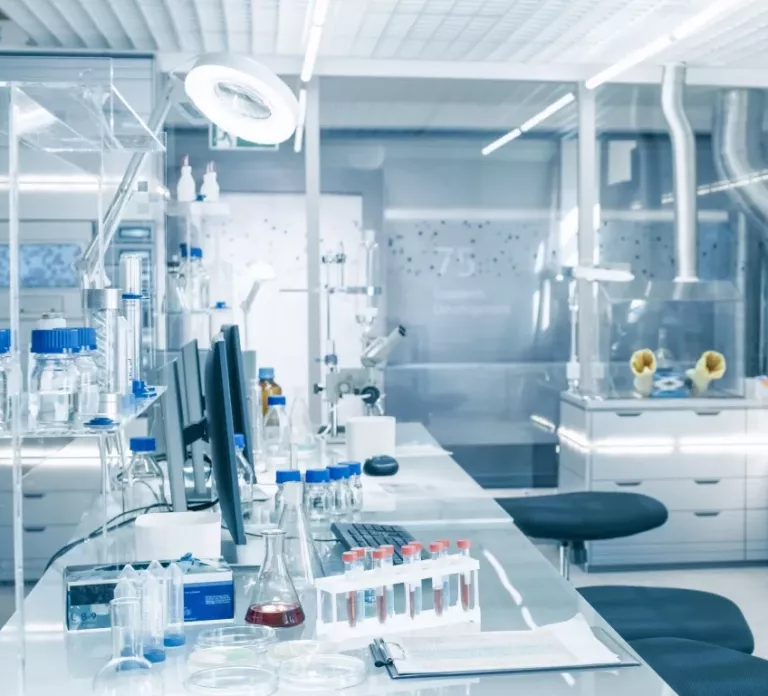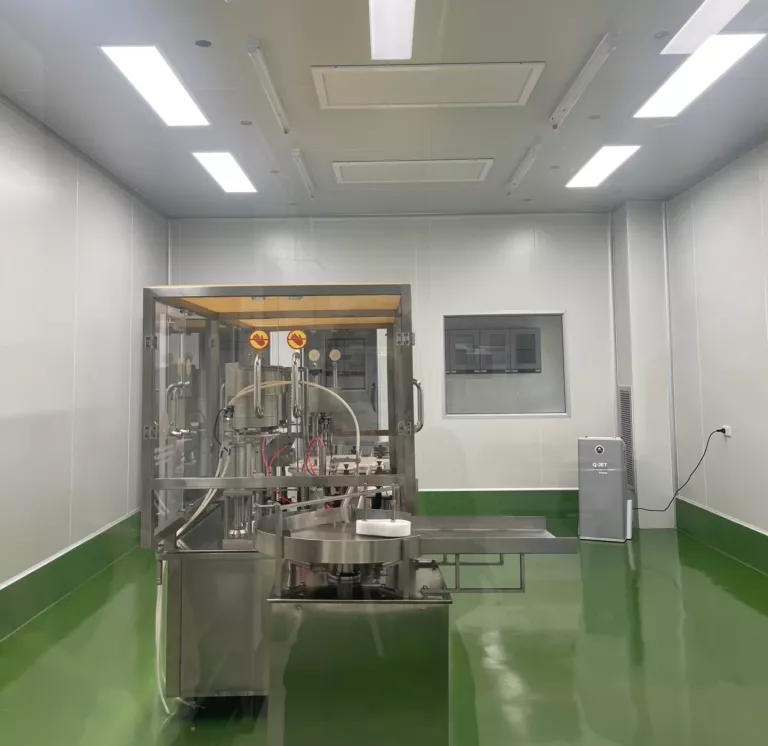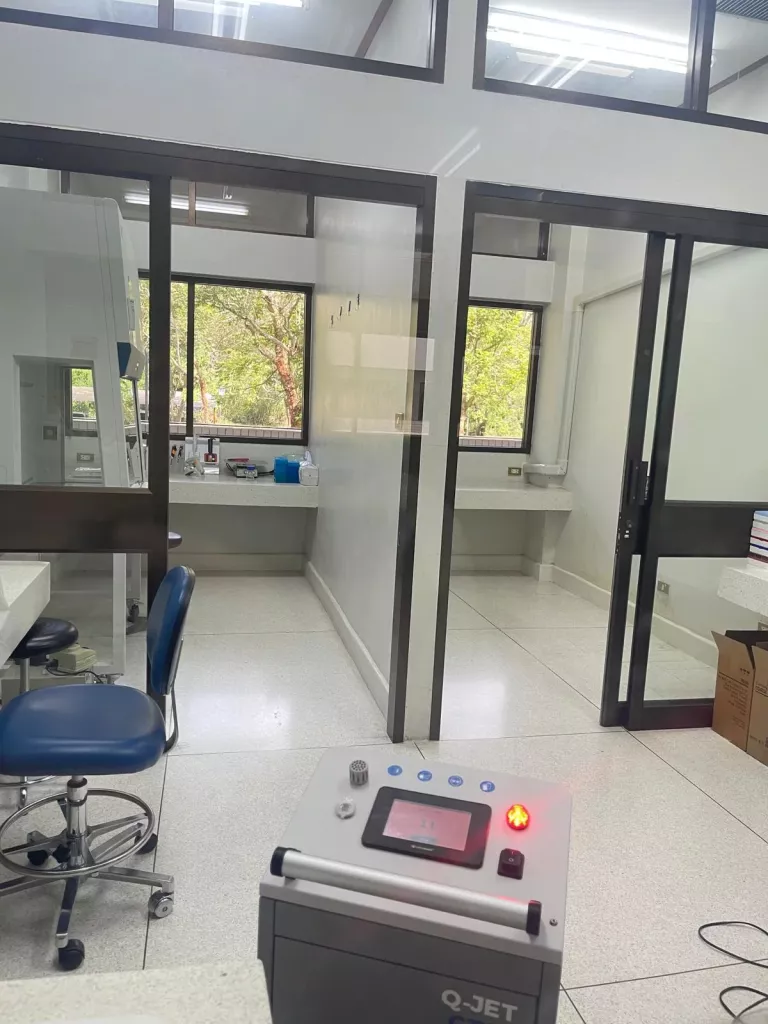Automated room disinfection using an airborne process
Aerosol disinfection
Aerosol disinfection
Aerosol disinfection has become an effective method for thoroughly disinfecting entire rooms and areas. It specifically addresses the increased hygiene requirements due to the rising spread of antibiotic-resistant germs. By releasing a fine disinfectant mist in the form of aerosols, the surfaces in a room, the air, and even hard-to-reach areas are quickly reached and freed from potentially harmful microorganisms. Aerosol disinfection provides an efficient supplement to traditional surface disinfection through manual wiping with disinfectant wipes.
This method does not replace manual disinfection but significantly extends its reach, including the air. This allows for targeted closure of disinfection gaps and a substantial reduction in the risk of infection. Experience with Sanosil disinfectants for whole-room aerosol disinfection spans over 25 years, during which the products have been used as private labels and brands with various devices.
Due to the enhanced efficacy of boosted hydrogen peroxide compared to standard H2O2 solutions, lower concentrations can be used while achieving similar effects. This results in comparable effectiveness but with much simpler and safer handling. This makes Sanosil aerosol disinfectants leaders in aerosol disinfection and aHP (aerosolized hydrogen peroxide) applications.

The DIN EN 17272 standard (and its predecessor AFNOR NFT 72-281) refers to a European standard method for testing the effectiveness of airborne surface disinfection systems. This test standard is exceptionally stringent and not easy to meet. It requires killing microbes, which are protected by a film of dried milk and fixed on steel plates, using an indirect spray method or aerosol within a defined time frame.
Approximately 70% of the available aerosol disinfection systems either do not meet the EN 17272 (or AFNOR NFT 72-281) requirements or have never been tested according to these standards. Critics argue that while these norms represent a quality benchmark for systems that meet these conditions, the challenging test conditions do not realistically reflect the reality of a thoroughly pre-cleaned room.
The Sanosil Q-Jet devices, along with the corresponding boosted hydrogen peroxide disinfectants, have been successfully tested according to these stringent quality standards. This means that the concept meets the highest requirements and can be used with confidence in sensitive hygiene areas.


Basically, there are two different methods for using hydrogen peroxide for whole-room disinfection in spaces: nebulization (aerosolized hydrogen peroxide, aHP) and vaporization (vaporized hydrogen peroxide, VpHP). Both have their justification and specific advantages.
In the aerosol, cold mist, or aHP method, hydrogen peroxide is typically atomized into tiny, fine, and airborne droplets using a compressor and fine nozzle and/or through a turbine air flow, and blown into a room. When the corresponding conditions are adhered to, these aerosols distribute evenly in the room, thus reducing germs on all surfaces and in the air.
In contrast to vaporized hydrogen peroxide, aerosols generally penetrate surfaces to a slightly greater depth. However, a potential disadvantage is that the disinfectant droplets may follow a certain directional flight path after leaving the nozzle before dispersing into the room air. If the device is not correctly positioned and the distance between the nozzle and walls or furniture is too short, these aerosols may tend to distribute more difficultly. Therefore, the aerosol vHP method is mainly suitable for treating rooms above a certain minimum size (rule of thumb: from 4m3).
In recent times, the topic of „automatic room disinfection“ has garnered significant attention. This is partly due to the increasing prevalence of antibiotic-resistant bacteria and, of course, the COVID-19 pandemic. As a result of market demand, this has led to numerous more or less innovative developments, including the now popular „disinfection robots“ equipped with powerful UV lamps. The promise from manufacturers: Rapid room disinfection without any chemical residue.
Due to the vigorous marketing of UV-C devices, established and proven technologies like aerosol disinfection with hydrogen peroxide have faced a certain amount of scrutiny. Is this justified? No, of course not! Room disinfection with hydrogen peroxide (aHP or vHP) naturally takes longer than UV-C disinfection. On one hand, a certain concentration of H2O2 needs to be achieved in the room air and maintained for a period of time. On the other hand, hydrogen peroxide must break down into water and oxygen after disinfection before the room can be reused. Therefore, a proper aerosol disinfection typically takes (regardless of the device or manufacturer) rarely less than 120 minutes. UV-C room disinfection is therefore faster. Under optimal conditions, exposure to strong radiation for a few seconds is enough to inactivate many germs. After turning off the device, the room can be immediately used again. However, UV-C disinfection is not a „miracle weapon.“
While H2O2 aerosols cover all areas in a room without gaps, a small shadow is enough to render UV-C treatment on the affected surface ineffective. Additionally, the penetration depth of UV rays is severely limited. Even tiny contaminants are sufficient to protect germs from the procedure. Therefore, the UV-C device can only utilize its full capacity under perfectly clean conditions. It should also be noted that UV-C does not affect bacterial endospores, unlike Sanosil Q-Jet aHP devices, which are regularly validated and tested for effectiveness using spore-containing bioindicators during operation.
Lastly, the often-quoted savings purportedly achieved by UV-C devices through not requiring disinfectant are offset, at the latest, when the high power consumption and regular replacement of UV lamps are taken into account.

Our core competencies include the manufacturing and application consulting of disinfection products for water systems, surfaces, and air (complete room disinfection).